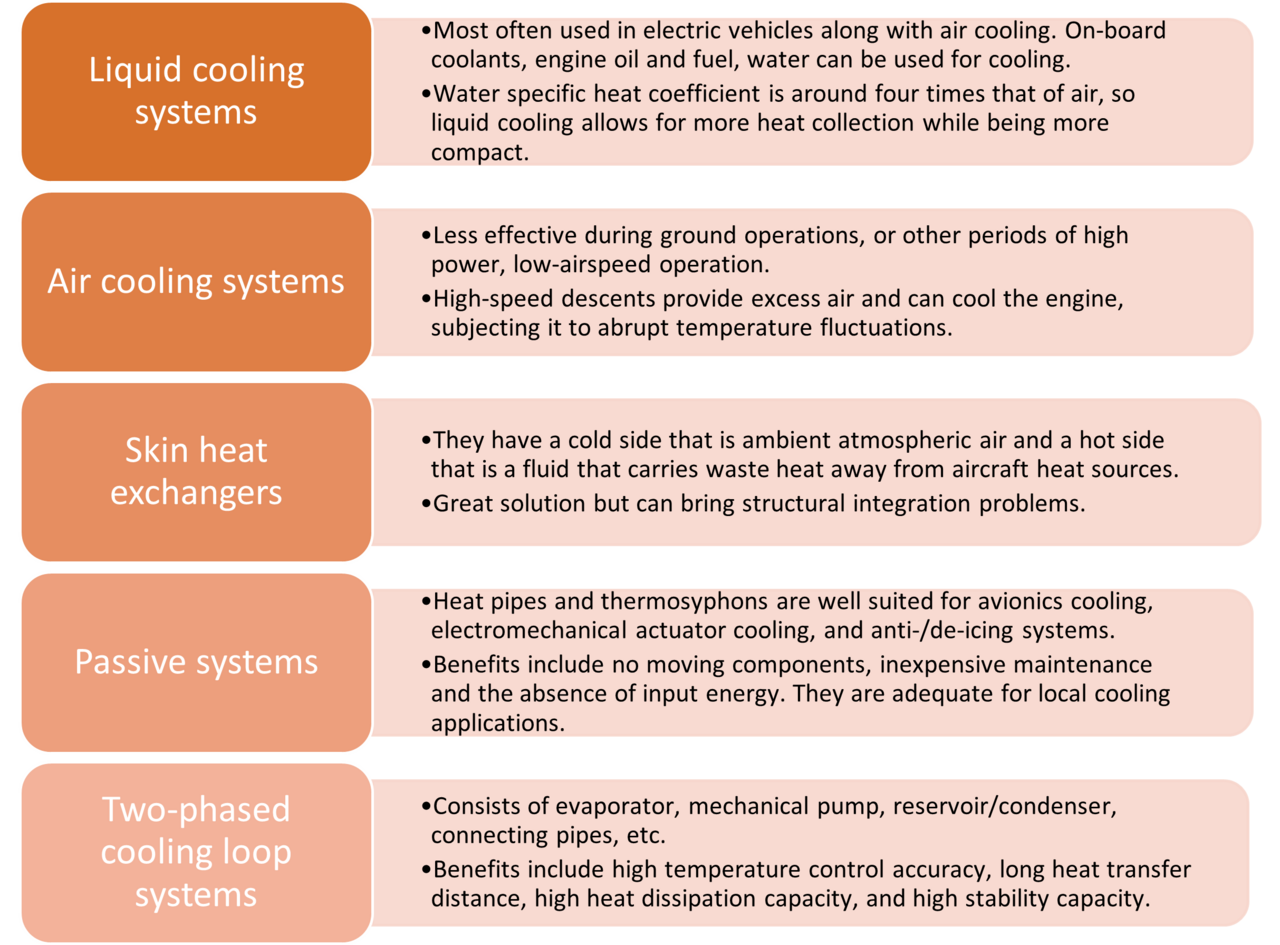Cooling solutions for hybrid electric aircraft
The electrification of aircraft propulsive systems requires specific cooling technologies as part of the decarbonation of the aviation industry. A recent review article presents cooling solutions for commercial hybrid-electric aircraft.
As part of the decarbonation of the aviation industry, future aircraft designs will need to feature propulsive system electrification, lightweight structures, greener energy sources such as biofuels and cryogenic fuels, etc. Electrifying the propulsion system introduces several technical challenges. Namely, high-power electric components in the aircraft generate high heat loads. Therefore, new thermal management strategies are required to tackle this issue when developing hybrid propulsion systems that run on both electricity and fuel.
In a traditional aircraft, heat management typically involves utilising fluid systems (e.g. air, fuel, and oil) to extract excess heat generated within the various engine components and systems. In a hybrid-electric aircraft, the reduced volume of fuel might not be enough to keep the on-board equipment within operating temperature.
Coutinho et al. (2023) recently published a review of thermal management systems for hybrid-electric aircraft. The authors believe that liquid cooling loops integrated with ram air heat exchangers seem to be the most viable ones with nowadays technology. Ram air heat exchangers use outside cold air coming from the airflow created by the moving aircraft. Promising solutions under development include nanofluids with higher thermal conductivities and skin heat exchangers. Skin heat exchangers make use of the already available aircraft outer surface, with low impact on drag, power and mass.
Other technologies would unlikely be accessible within a 30-year timescale, such as cryogenic coolers. For example, liquid hydrogen could be used to cool superconducting electrical devices. However, the challenge lies in the space necessary to hold the requisite quantity of liquid hydrogen in the aircraft, owing to its low volumetric density.
Below are solutions which are already in use in some aircraft, with a Technology Readiness Level (TRL) > 7.

For more information, please read the open access review article published in Applied Thermal Engineering, also available on FRIDOC.
Sources
European Commission, Directorate-General for Mobility and Transport, Directorate-General for Research and Innovation, Flightpath 2050: Europe’s vision for aviation: maintaining global leadership and serving society’s needs, Publications Office, 2011, https://data.europa.eu/doi/10.2777/50266
Coutinho M. et al. (2023). A review on the recent developments in thermal management systems for hybrid-electric aircraft. Applied Thermal Engineering, 120427. https://doi.org/10.1016/j.applthermaleng.2023.120427
For illustration purposes, electric aircraft from wikimedia
